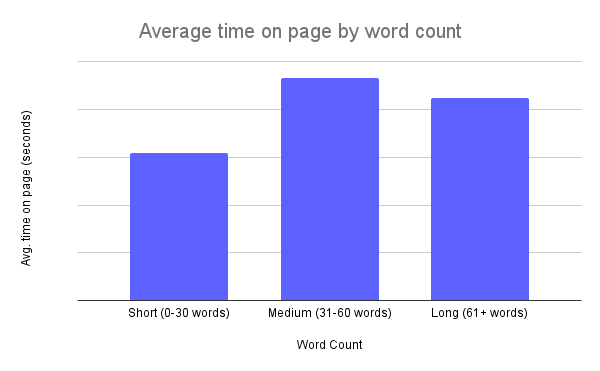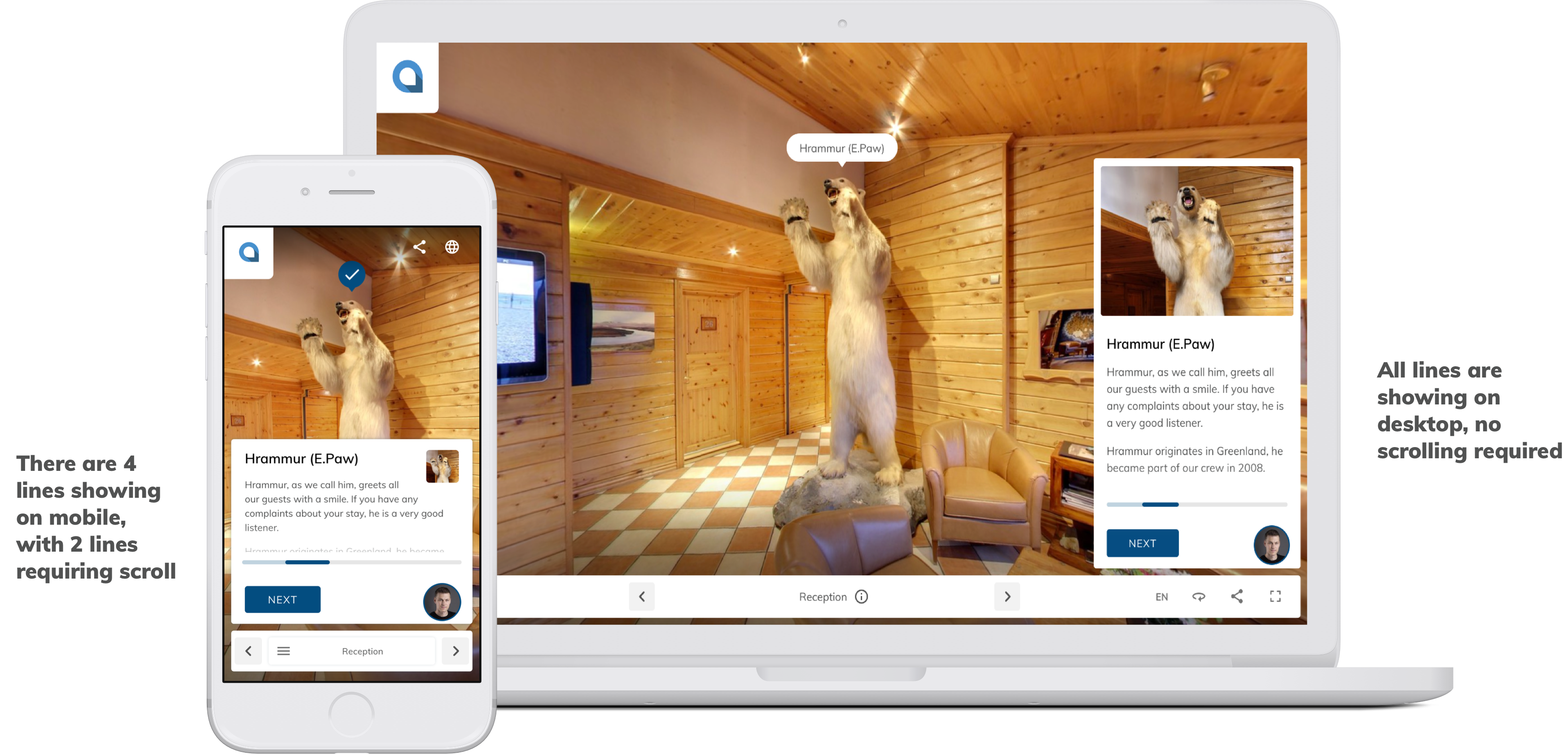.jpg)
Copywriting plays a big role in communicating your brand and value proposition to your target audience. When it comes to your virtual tour, there's a good chance that most visitors haven't set foot in your space, and want to explore what your organization has to offer, who you are, and what kind of experience awaits them inside. This goes deeper than simply listing details and amenities. To really succeed, you need to tell a story. When getting started on writing your scene and hotspot descriptions, here are 5 considerations to take into account.
Understand your customer
To develop effective copy that helps visitors imagine themselves in your space, deeply understand your ideal customer and what they seek to learn. Talk to front-line teams who interact directly with your target audience, and review demographic data from your website and social channels. These steps will help you form one or more customer personas, and support you in developing text descriptions in the voice of your customer. Answer the following questions about your organization:
- How do you describe the experience you offer to a potential customer?
- What tools does your organization provide them with?
- What services or amenities can they take advantage of?
- What opportunities does your organization open up for them?
- How do others like them use your space?
Answering these and developing personas will sharpen your understanding of potential virtual tour visitors, and make writing for them much more straightforward.
Write in a customer-centric way
Think of your text descriptions like a conversation with your customer. Nobody enjoys a conversation with someone who only talks about themselves, right? Consider what value your organization delivers, and why it will matter in the lives of your customers. Including those points will make your content more customer-centric.
Once you’re thinking like the end-user, here are four useful tips to develop descriptions that connect with your audience:
- Think about what kinds of questions your customers are asking you. Try to answer queries within your descriptions and surface the information they seek, without making them search for it.
- Ask your team or other departments what would be most relevant to your customer. Front-line staff are great resources to find the information your audience wants to know.
- Use what you already have today. Take existing copy from your website, video scripts, in-person walking tour scripts, program pages, viewbooks, to form the base of your descriptions and rework them in your visitors voice.
- Avoid talking about how great you are. Instead talk about how you can fulfill your customer's needs and expectations.

To illustrate these concepts in action, below are a sample of scene and hotspot descriptions from different verticals. They use customer-centric positioning (evidenced by the you's) and speak directly to the audience directly in a conversational way. Finally, they use vivid detail to describe spaces and benefits to end users.

Keep descriptions succinct and easy to read
Text descriptions should be short and easy to read but descriptive enough for a reader (or listener) to imagine the scene. Looking at the average time your users spend on each page can help you tailor scene and hotspot descriptions to your visitors' viewing habits. However, when you're just starting out, it can be hard to know how much to write.
A handy benchmark for text description length
Analyzing average time on page metrics across 3 word count buckets revealed a sweet spot from the 'medium' scene grouping with 31 to 60 words in descriptions. There appears to be a positive correlation between the amount of text and the average time the user spends on a page up to the medium bucket, but a slight drop-off in average time per page in longer descriptions. Based on this, a general guideline is to use at least 45 words in text descriptions. With an average adult reading speed of 200 to 300 words per minute (Medium uses 265 WPM), you would expect to visitors to spend an average of 9 to 13.5 seconds on the page to read text, plus time to view imagery.
Keep in mind that your audience will likely differ from the sample, and variables like the position of the scene on the tour and type of imagery can cause substantial variance in results. When your tour launches and user data accumulates for 2-3 months, re-evaluate how different text lengths affect user engagement.

Consider the devices your visitors are using
While writing descriptions, plan for a significant portion of visitors to access your site on mobile (sometimes over 50%). With this in mind, shorten descriptions or state important information first to ensure it won't be missed on smaller screens.

Plan for audio narration from the get-go
Audio narration makes the experience more sensory and immersive, while also enhancing accessibility, and is a sure way to increase user engagement metrics. If you're planning to add audio narration in future, here are a few tips for writing narrative text descriptions:
- Keep them more casual and conversational instead of formal --> this will ensure they sound natural when read by a narrator
- Consider who your narrator is and if there are opportunities to build in personal anecdotes to make the story more authentic
- If there are links referenced in the descriptions, you'll need to adjust the narrated descriptions slightly. For example, instead of saying “Click here” or “Learn more”, say “Click the link in the description to learn more about …”
- Read your text descriptions out loud to assess whether they sound natural
(Sidenote) Circuit offers an Audio Guide feature that narrates virtual tour text descriptions to users through audio clips, freeing them up to explore and interact with the visual media.
Use external links selectively
Virtual tours can help your customers locate useful resources on your website. It can be tempting to load up descriptions with tons of links to relevant pages, but this does come at a cost. If your goal is for users to take in the full story, view tour scenes and convert through a lead form, be selective about external links. When they are used, monitoring page exit rates will help you determine whether they are effective or disruptive to the user experience and your chance to convert visitors. Here are a few best practices for external links:
- Consider moving scenes with links further along the tour (towards the end)
- Avoid social media links entirely as it is very easy for users to click away and lose context
- Link to web pages that are highly relevant to your visitor and capable of generating conversions
Text descriptions can be tricky to get right, but are essential in making your virtual tour the best possible tool for online storytelling. By using a customer-centric writing style that puts your audience needs first, and developing succinct text descriptions, you can craft excellent copy to maximize your audience engagement. Monitoring key stats after launch like time on page and exit rates can help you optimize engagement even further.
Need a second opinion or another set of eyes on your scene and hotspot descriptions? Click here to book some time with us.


.png)




